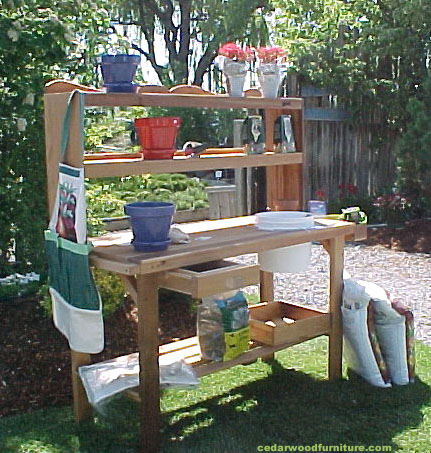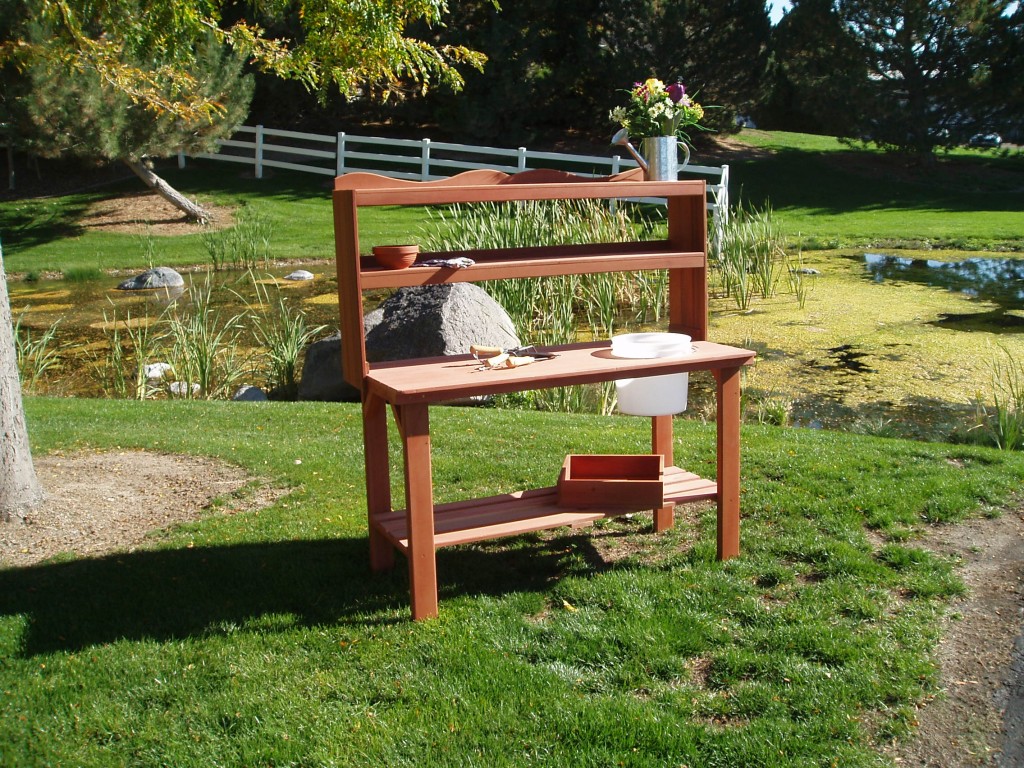1. A potting bench is a specialized work table used for small gardening tasks like transplanting seedlings or potting plants. A basic potting bench has a work surface at a height that is comfortable for use while standing. Most designs will also feature storage for your potting soil, pots, and tools. Some benches are small and portable, while others can be fixed to the side of a greenhouse or the inside of a potting shed.
2. Bring cottage charm and the spirit of your garden indoors by using a potting bench as a unique accent table in your sunroom or foyer. These benches are perfect for displaying a collection of potted plants and quaint garden-themed knick-knacks like gnomes, birdhouses, or small sundials. Your home will feel fresh and natural year-round.
3. Since potting benches are routinely exposed to soil, water, and sunlight, they must be constructed from weather-resistant materials to prevent decay. Cedar wood is a popular choice because it is naturally rot- and insect damage-resistant. Cedar also ages beautifully to a silvery-gray and has that classic style you desire for your garden.
4. Plastic vinyl potting benches are sturdy, weather-resistant, relatively inexpensive, and long-lasting. They are also easy to clean, which is an important consideration for a piece of furniture designed for dirty jobs! Look for benches made of recycled plastic to complement your environmentally friendly organic garden.
5. Metal potting benches offer their own special charm, and can be an attractive choice if rust and corrosion can be controlled. Metal benches are easy to hose off, incredibly sturdy, and will last a lifetime.
6. Aim for a bench that is waist-high so you won’t have to stoop down or reach up while you work. Your back will thank you, and you’ll be able to putter longer in your personal garden center. The bench surface should be solid and plenty deep, giving you room to work with your plants and write in your garden journal.
7. Maintaining a garden journal will help you improve your garden year after year. Keep track of when plants were planted, what week your different flowers bloomed, which plants need to be split or transplanted next year, soil analysis results, and any other salient details. Over time you will become an expert on your own garden plot and will feel more connected to your land.
8. Protect your potting bench during the winter by storing it in a garage or shed, if possible. If you need to keep your bench outside, cover it with a tarp, plastic sheet, or outdoor furniture cover like those used for BBQ grills. Clean the bench thoroughly with a hose before packing it away; you should hose it off a couple times during the growing season, too.
9. The ideal potting bench keeps all your gardening equipment organized in one location by offering plenty of storage space. Look for a spot to hang hand tools, and for ample shelving above and below the work surface for stacking empty pots and containers, plant food and fertilizer (stored in airtight containers, of course), and bags of potting soil.
10. Some potting benches offer specialized features to make gardening even more enjoyable. A raised edge on the work surface prevents dirt from spilling on the floor and creating a muddy mess. Buckets for garbage storage or compost bin collecting make recycling your scraps and debris easier. You can store your soil in a dry sink or special drawer. Fancy benches may even have a water or drain hookup.
Learn more about our Potting Benches Here!
Order online in November and save 10%! They make great gifts for your gardening loved ones.


